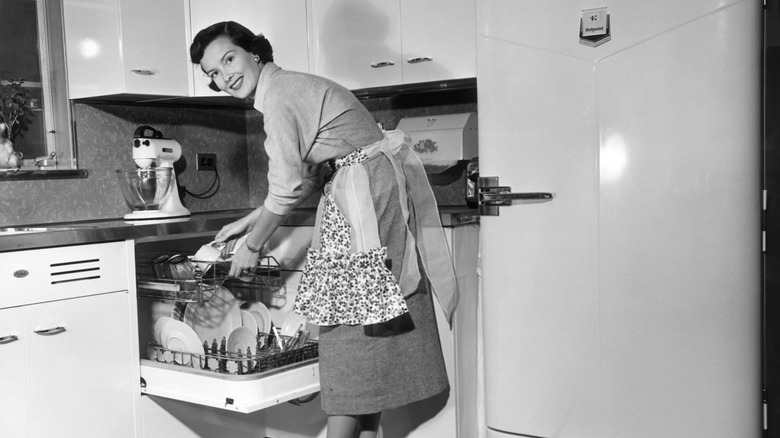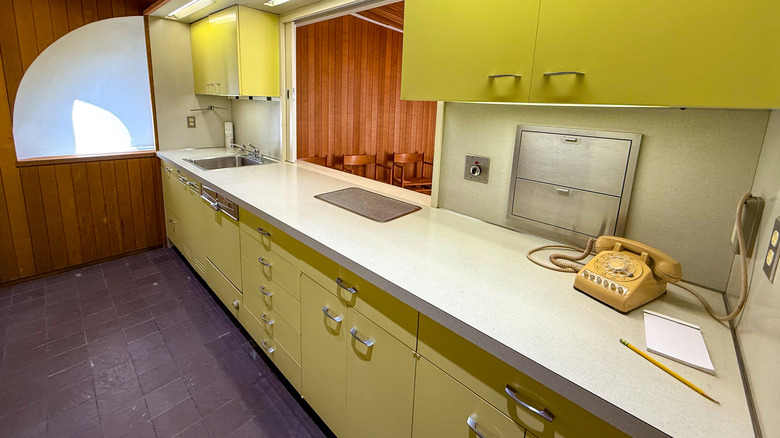The Old-School Kitchen Cabinet Trend That Was Popular Before Wood & Particleboard
In the Victorian era, homeowners worried about vermin spreading disease, thus leading to the invention of the steel cabinet, made from a material that rats couldn't chew through. Sanitary kitchens joined the vacuum cleaner and the washing machine as frontline defenses against germs. After WWII, when steel was again abundant, designers like Raymond Loewy launched lines of complete kitchen cabinetry made of the durable metal, joining pre-war companies like Youngstown kitchens in bringing mass-produced metal cabinetry to American homes. A touch of nostalgia, a renewed appreciation for mid-century modern architecture, and decor play a role in the current elevation of steel kitchen cabinets from old-school to trendy.
Not only are steel kitchen cabinets pest-resistant, they're fire-resistant, easier to keep clean, and durable. But they're also noisy, they rust, and can dent. In addition to standard rectangular cupboards, companies offered innovations like rounded countertops usually made from Formica or stainless steel, curved corners with open shelving, built-in lazy susans, and small spice cabinets with louvered doors placed next to the stove. They were marketed to homemakers as work-saving kitchens with large sinks and integrated drainboards. Cabinet and drawer pulls were made from stainless steel or chrome, and while the kitchens were frequently white, some kitchens featured bright colors like yellow, orange, or shades of green or blue. If you want to recreate this vintage kitchen cabinet style, original pieces are available, restored, or ready to be restored. But if you don't want a project that big, you can buy new cabinets made to look old.
How to get a retro kitchen look
The end of WWII brought a housing boom and a baby boom. New houses needed kitchens, and builders competed for the supply of both wood and metal cabinetry. Historically, kitchens had been relegated to out-of-the-way spaces in the home, but postwar builders moved them into places of prominence, making a thoroughly modern kitchen a status symbol. In addition to steel cabinets, kitchens featured washing machines and labor-saving small appliances. A 1953 Popular Science magazine article laid out a modern kitchen with work zones designed to improve efficiency for "tall, short, or medium-sized" women. Even Frank Lloyd Wright jumped on the metal kitchen bandwagon, using St. Charles Street Kitchen Cabinets in his designs.
These retro kitchens are making a comeback. Homeowners and designers are restoring and installing full kitchens made by classic manufacturers like Youngstown, or using a few of the elements like colors popular in the 1950s and 1960s, black and white checkerboard floors, or adding a backsplash that complements stainless steel. Full kitchens can be found online at places like eBay or at architectural salvage stores, but individual pieces are easier to find. You'll likely pay less for units that require restoration, and you should have a professional install a full kitchen if you're not a skilled builder. You really don't want your retro steel cabinet falling off the wall as soon as you load dishes into it. The same advice holds true for repainting. Having the steel cabinets professionally powder-coated ensures a long-lasting finish. Complete your kitchen with a vintage '60s stove or one of the new appliance knock-offs.

